Locate Your iPhone with iCloud: A Complete Guide

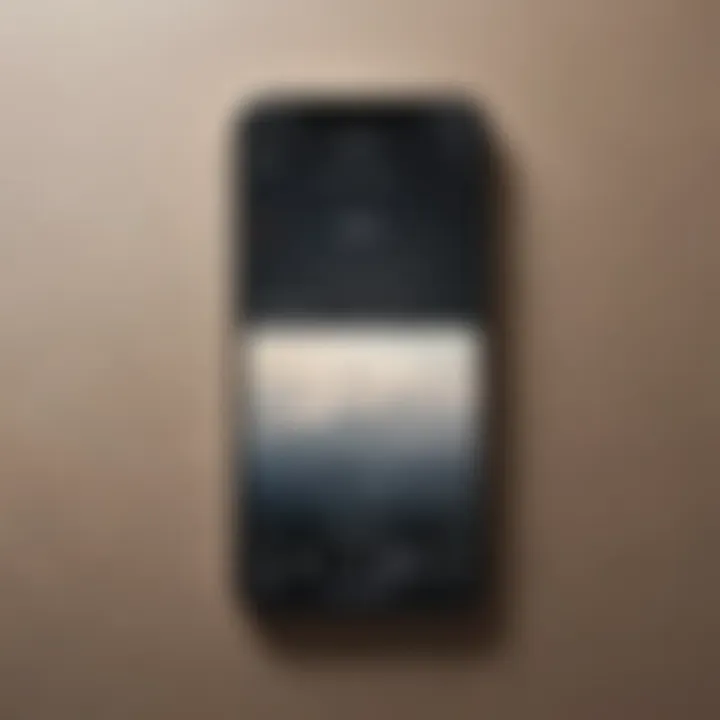
Intro
Locating a lost or misplaced iPhone can be a distressing experience. Fortunately, Apple’s iCloud offers a reliable way to track your device through its Find My iPhone feature. This guide details the steps to efficiently use iCloud for locating your iPhone, along with troubleshooting tips and account management strategies. For those familiar with Apple technology, gaining a deeper understanding of these tools can enhance your experience and security when using your devices.
Product Overview
Intro to the Apple Product
Apple iPhone is widely recognized for its blend of elegance and advanced technology. Each iteration boasts improved hardware, software, and features designed to streamline user interaction. Important components like the operating system, security protocols, and hardware specifications play significant roles in this device’s performance and appeal.
Key Features and Specifications
The iPhone comes equipped with several key features that enable its users to enjoy a seamless experience:
- iCloud Integration: Supports backup and recovery processes for data and settings.
- Find My iPhone: Allows users to locate devices on a map, lock them, or erase their data from afar.
- Camera Capabilities: High-quality photography with advanced processing capabilities.
- Security Features: Includes Face ID, Touch ID, and end-to-end encryption for secure data protection.
Design and Aesthetics
With its sleek design and premium materials, the iPhone reflects Apple’s commitment to quality and visual appeal. The devices come in various colors and finishes, catering to diverse consumer preferences. The user interface is also designed for ease of navigation, ensuring a pleasant user experience.
Performance and User Experience
Performance Benchmarks
Apple iPhones consistently rank high in performance tests, driven primarily by their powerful processors and optimized operating system. Users typically find that applications run smoothly, even under demanding conditions. Performance metrics can vary by model, but overall, they maintain a leading position in the smartphone market.
User Interface and Software Capabilities
iOS, the operating system for iPhone, is known for its intuitive user interface. It permits navigation through gestures and has a range of software capabilities that enhance productivity and entertainment. Recent updates have introduced features like split-screen multitasking and advanced privacy settings, improving versatility in usage.
User Experiences and Feedback
Feedback from iPhone users usually emphasizes satisfaction with device performance and ecosystem integration. Users appreciate the cohesive environment that Apple products create. However, some users occasionally encounter issues, prompting the need for support and guidance on resolving these.
Tips and Tricks
How-to Guides and Tutorials
To optimize the functionality of your iPhone and ensure effective use of iCloud, follow these steps:
- Ensure iCloud is set up: Go to Settings > [your name] > iCloud to sign in and enable Find My iPhone.
- Check for Software Updates: Keep your operating system updated via Settings > General > Software Update.
Hidden Features and Functionalities
Many users are unaware of some notable features:
- Send Last Location: Automatically sends the location of your iPhone before the battery dies. Ensure it’s enabled in the Find My settings.
- Use Offline Finding: Locate your phone even without a cellular or Wi-Fi connection by utilizing Bluetooth signals from other Apple devices.
Troubleshooting Common Issues
In case of difficulties, here are some solutions:
- Cannot Find iPhone: Ensure the iPhone is turned on and connected to the internet.
- iCloud Account Issues: Confirm your Apple ID is active and that you’re logged into the correct account.
Latest Updates and News
Recent Developments
Apple regularly introduces software updates that enhance features of iPhones, including improvements to iCloud functionalities and security measures. Users should stay updated on these changes.
Industry News and Rumors
The tech community often discusses upcoming devices or enhancements to current features. Participate in forums like Reddit for insights, or check industry news through platforms like Facebook.
Keeping abreast of developments in the Apple ecosystem is essential for maximizing device utility and security.
Prolusion to iCloud Device Location
Understanding how to locate your iPhone through iCloud is crucial for any user of Apple's ecosystem. In today's fast-paced world, losing a device can cause significant distress due to the personal and professional information it holds. This introduction serves to highlight the importance of iCloud's device location capabilities and the peace of mind it provides. By leveraging iCloud, users can efficiently track their devices, which can save them time and potential financial loss.
Overview of iCloud
Apple's iCloud is more than just a storage service; it acts as a central hub for your Apple devices. It integrates various services such as backups, data syncing, and device location features. iCloud is designed to enhance the user experience by connecting all devices seamlessly. When enabled, the iCloud service allows users to track their devices, ensuring that if a device goes missing, users have tools to locate, secure, or erase any sensitive data. For those who value their privacy and data security, iCloud offers functionalities that manage this information effectively.
Significance of Tracking Devices
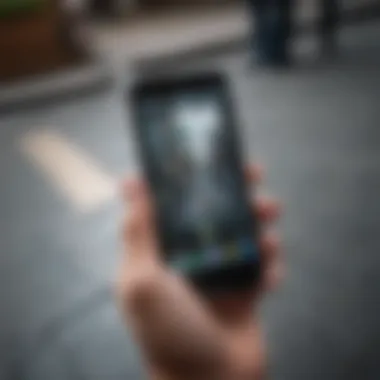
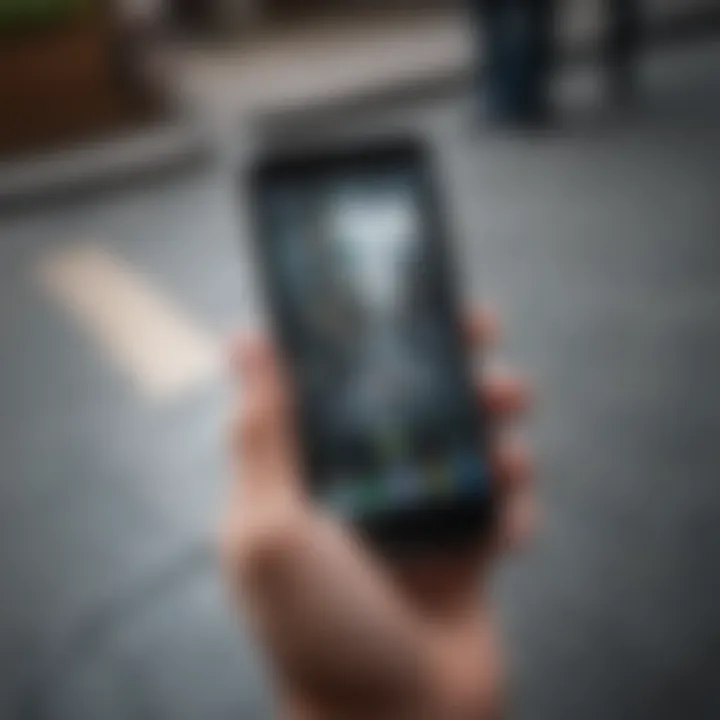
The ability to track devices through iCloud is a significant advantage in the modern digital age. Here are several key points to consider:
- Security: Users can activate various measures to protect their information and easily find lost devices.
- Time-Saving: Quickly locating a misplaced iPhone can alleviate the anxiety associated with not knowing its whereabouts.
- Data Protection: If a device cannot be retrieved, users can remotely erase their data, minimizing the risk of sensitive data falling into the wrong hands.
Using iCloud for locating devices is not just about finding lost items; it’s about safeguarding your valuable personal information.
Setting Up iCloud for Device Tracking
Setting up iCloud for device tracking is a vital first step for anyone wanting to locate their iPhone efficiently. This service not only assists users in finding lost devices, but it also provides security and peace of mind. Many users overlook the importance of configuration for enabling these features, leading to challenges later. Proper setup can significantly enhance your chances of retrieving your device in case it gets lost or stolen. Understanding these features can make the iCloud ecosystem work more effectively for you.
Configuring iCloud on Your iPhone
To kick off, make sure you have an active Apple ID. If you haven’t set up your iCloud account yet, navigate to the Settings app on your iPhone. Here are the steps:
- Open Settings.
- Tap on your name at the top of the screen.
- If you aren’t signed in, tap on Sign in to your iPhone and provide your Apple ID credentials.
- Once signed in, tap on iCloud.
- Ensure iCloud Drive is turned on to enable features like file syncing and backups.
Along with iCloud Drive, you may want to check the settings for applications you wish to back up or sync. Having a well-configured iCloud can mean the difference between a seamless recovery process and unnecessary headaches.
Enabling 'Find My iPhone'
Now that your iCloud account is set up, the essential next step is to enable the "Find My iPhone" feature. This allows you to track your iPhone's location whenever needed. Here’s how you can enable this functionality:
- From the iCloud settings in Settings.
- Look for Find My iPhone, and tap on it.
- Toggle the switch to turn it on.
- It is also advisable to enable Send Last Location, so your device automatically sends its last known location before the battery dies.
Enabling these options ensures your device is always trackable through the iCloud interface.
By setting up iCloud and enabling Find My iPhone, you create a robust framework that helps in easily locating your device, providing security and recovery options that seem necessary in today's fast-paced digital age.
By taking these preliminary steps, you prepare your iPhone for smooth operation with iCloud in terms of tracking capabilities.
Accessing iCloud to Locate Your iPhone
Accessing iCloud is a critical step in the process of locating your iPhone. This service by Apple provides a seamless interface to track lost devices. Understanding how to access your iCloud account sets the foundation for finding your iPhone effectively. With the right knowledge, searching for a misplaced device becomes a more manageable task.
The benefits of being able to access iCloud and utilize its features are significant. Foremost, it provides peace of mind. Knowing that finding your iPhone is possible can alleviate anxiety when you misplace it. Also, iCloud's tracking functionality supports multiple Apple devices, allowing users to locate their iPhones from any compatible device, whether it's another iPhone, iPad, or a Mac.
Logging into iCloud Account
To begin, you must log into your iCloud account. Go to the iCloud website, where you will enter your Apple ID and password. If you have forgotten your credentials, use the recovery options available on the site to regain access. Logging in successfully leads you to a dashboard with different Apple services displayed.
It is essential to ensure proper credentials are used. Using the correct Apple ID is vital, as using another account will not display your devices. Two-factor authentication may also require confirmation of your identity, which adds another layer of security. Keep your devices nearby to complete this step smoothly. For those not familiar with the tendencies of Apple’s ecosystem, getting accustomed to the interface can take time. However, it is generally user-friendly.
Navigating to 'Find My iPhone' Feature
Once logged in, the next step is to find the 'Find My iPhone' feature in the iCloud dashboard. This option provides the necessary tools for locating lost devices quickly. Look for the icon associated with Find My iPhone. Click on it, and you will be redirected to a map interface showing the location of your device detailed.
In this section, understanding the functionalities becomes crucial. This feature can display your iPhone's current location, allow you to play a sound, enable Lost Mode, or even erase the device remotely if necessary. Each function has its advantages:
- Play Sound: Useful if your phone is nearby but unresponsive to the senses.
- Lost Mode: Locks your device and displays a message for anyone who may find it.
- Erase: Protects sensitive information by wiping the device remotely.
Remember, this feature relies on the device being powered on and connected to the internet. If the device is offline, it will show the last known location, adding to comprehensiveness.
In summary, accessing iCloud and efficiently using the 'Find My iPhone' functionality equips users with necessary tools to track their devices. Not only does it enhance the likelihood of recovery, but it also builds user confidence in the capabilities of Apple's offerings.
Locating Your iPhone
In the event of a misplaced iPhone, understanding how to effectively locate it is crucial. This section delves into the significance of locating your device through iCloud and the various benefits that come with utilizing this service. iCloud's tracking feature not only provides a means to find a lost phone but also enhances your overall device security.
When you locate your iPhone, it can save you time, stress, and potential costs of replacement. Moreover, knowing the location of your smartphone may also prevent unauthorized access to your personal information. Setting up this capability can offer peace of mind, knowing that even if your device goes missing, you have the tools to track its whereabouts.
Understanding the Map Interface
The map interface within iCloud's Find My iPhone feature is designed to provide a visual representation of your device's location. It displays the device's position in real time, allowing you to monitor its movements. The interface is user-friendly, showing a map similar to widely used navigation applications.
Once you access the map, you will see several elements:
- Device Pin: This is represented by a pin indicating the location of your iPhone.
- Map Options: You have the ability to switch between different map views such as Standard, Satellite, or Hybrid, depending on your preference.
- Navigation Tools: Use these for zooming in and out to enhance your view of the area around the device.
Working with the map can become intuitive once you get accustomed to its functionalities. You can even see your device’s last known location if the device is offline. It's an essential aspect of utilizing the Find My iPhone feature effectively.
Using Location Options
iCloud provides various options to enhance the tracking experience, giving you flexibility depending on your situation. These options allow users to interact with their device in several ways:
- Play Sound: This feature lets you emit a sound from your iPhone, useful for locating it if it is nearby.
- Directions: If you are trying to reach your device, you can get directions to its location through Apple Maps.
- Notifications: Receive alerts if your phone is found or if its location changes.
Using these options ensures that you can manage device recovery efficiently. Each feature is aimed to assist in different scenarios, whether your iPhone is lost in the house or in a public space. Taking advantage of these functionalities can significantly expedite the recovery process.
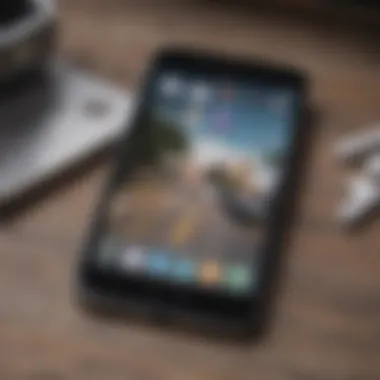
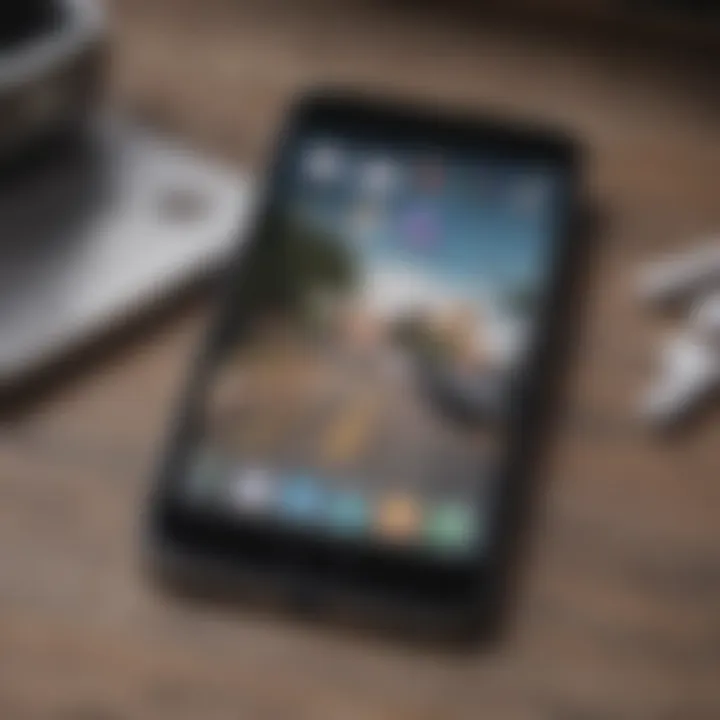
Utilizing Sound Alerts for Device Recovery
Utilizing sound alerts is a critical feature in the process of locating a lost iPhone. When the device is misplaced, visual detection can often be inadequate, especially in crowded areas or noisy environments. The sound alert function effectively directs users to their iPhone's location by playing a loud sound, making it easier to find. This feature is extremely beneficial when the device is nearby but out of sight, such as under a couch or left in an adjoining room.
Activating sound alerts provides a straightforward way to recover the device without needing to search extensively. The simplicity of this method is appealing to users. It minimizes the time spent searching and can ultimately reduce anxiety levels associated with the loss of a valuable device. Moreover, if the iPhone is in Lost Mode, the sound alerts can assist someone who finds it in contacting the owner, providing an additional layer of interactivity in device recovery.
Activating Sound Alerts
To activate sound alerts on your iPhone through iCloud, follow these steps:
- Log into your iCloud account via a web browser or the Find My app on another Apple device.
- Navigate to the 'Find My iPhone' option.
- Once you locate your device on the map interface, click on it.
- You will see an option labeled "Play Sound". Click this option, and the device will emit an alert tone.
This will allow you to pinpoint the precise location of your iPhone as the sound continues until it is turned off or the device is located.
Adjusting Sound Settings
Adjusting sound settings can enhance the efficiency of locating your lost device. Here are a few points to keep in mind:
- Volume Settings: Ensure that your iPhone's volume is set to a reasonable level. If it is on silent or too low, the sound alert may be ineffective.
- Ringer Switch: Check if the ringer switch on the side of your iPhone is set to the on position. If it’s on silent mode, the sound alerts won't work until changed.
- Avoiding Mute: Be mindful of any apps or settings that might automatically mute alerts. Ensure your preferences allow sound during recovery attempts.
By carefully managing these settings, you can improve your success in recovering a lost device. Sound alerts not only make the process easier but also ensure that the experience is as stress-free as possible.
Tip: Regularly test your sound alert features. This not only familiarizes you with the recovery process but ensures your settings are optimized for effective sound alerts.
Enabling Lost Mode
Enabling Lost Mode on your iPhone is a crucial step in the process of recovering a lost device. This feature is part of Apple’s Find My iPhone service within iCloud. By activating Lost Mode, you essentially lock your device remotely, which prevents unauthorized access to personal data, securing your information until the device is retrieved.
One of the significant benefits of Lost Mode is its ability to track the device's location. When Lost Mode is active, your iPhone can report its whereabouts periodically, providing updates on its location. This feature enhances the chances of recovery, especially if it is in a public setting.
Moreover, enabling Lost Mode allows you to display a custom message on the lock screen. You can provide contact information or instructions for the finder, making it easier for someone who finds your device to return it.
Steps to Enable Lost Mode
Activating Lost Mode is straightforward and can be performed through your iCloud account. Follow these steps:
- Log into iCloud: Open a web browser on your computer or another device and visit iCloud.com. Enter your Apple ID and password.
- Open Find My iPhone: Once logged in, select the "Find iPhone" option from the main interface.
- Select Your Device: Click on the "All Devices" dropdown menu at the top of the screen. Find and select the iPhone you wish to place in Lost Mode.
- Activate Lost Mode: Click on the "Lost Mode" option. You will be guided through prompts to enable this feature. You can create a passcode if you haven’t set one previously.
- Add a Message: During this process, you will have the opportunity to enter a message that will be shown on the lock screen of the device.
Once these steps are completed, your iPhone will be locked, and you will be able to track its location as long as it is powered on and connected to the internet.
Communicating a Message to Finders
An important aspect of Lost Mode is the ability to communicate directly with anyone who may find your lost iPhone. When you enter a message during the setup of Lost Mode, it appears on the device’s lock screen. This message can include critical information such as:
- Contact Number: Include a phone number where you can be reached. This increases the likelihood of a successful return.
- Instructions: Simple instructions can inform the finder about what they should do if they come across your lost phone. For instance, instruct them to call the provided number or return it to a nearby store.
- Thank You Note: A polite note expressing gratitude for any help in returning the device can be effective.
By crafting a clear and concise message, you enhance the probability of your iPhone being returned safely. Remember, the more straightforward and informative the message, the better chance you have at recovering your device.
Remote Erasure of Sensitive Data
The remote erasure of sensitive data is a critical consideration for any iPhone user who values privacy and security. When an iPhone is lost or stolen, the risk of personal information falling into the wrong hands becomes apparent. Sensitive data can include contacts, messages, photos, and banking information. Therefore, the ability to erase this data remotely via iCloud offers peace of mind. This feature ensures that even if you cannot retrieve your device, your private information will be safe from unauthorized access.
Implementing a remote wipe can be a straightforward process, but understanding its fundamental aspects and implications is essential for effective execution. Users should be aware that once the device is erased, it will revert to its factory settings. All content will be lost permanently if the iPhone is not backed up. Thus, considering the timing and usefulness of a remote wipe is paramount. This feature is particularly beneficial for individuals who are cautious about data leaks and those who have sensitive information on their devices.
Understanding Remote Wipe
Remote wipe, also often referred to as remote erase, allows users to delete all data stored on their iPhone from another device, such as a laptop or another smartphone. This function is part of the iCloud service and is accessible via the 'Find My iPhone' feature. The procedure is designed to protect your personal data by removing it from the lost or stolen device.
Once a remote wipe is initiated, the device will be wiped clean and restored to factory settings. This means that everything from photos to apps will be deleted. Users should consider that the feature is efficient and quick but will need an active internet connection on the iPhone to complete the operation. If the device is offline, the wipe command will execute once it reconnects.
Procedures for Data Erasure
To perform a remote wipe, follow these steps:
- Log into iCloud: Use a computer or another device to access the iCloud website or the Find My app. You will need to enter your Apple ID and password.
- Select 'Find My iPhone': Once logged in, navigate to the 'Find My iPhone' feature.
- Locate Your Device: In the map interface, you should see your iPhone listed if it is powered on and connected to the internet.
- Initiate Remote Wipe: Click on the device you wish to erase and select the option to 'Erase iPhone.' You will be prompted to confirm the action.
- Confirm Erasure: After confirmation, the wipe will start immediately if the phone is connected. If not, the erasure will proceed once the phone connects.
This procedure is essential, especially for those with sensitive data. Never overlook the need to secure personal information when devices are misplaced.
To ensure that your data is protected at all times, it is wise to regularly back up your iPhone. In case you need to perform a remote wipe, you will still have access to your data through your backups. This proactive approach mitigates the risk of total data loss.
Troubleshooting Common Issues
When attempting to locate your iPhone using iCloud, users may encounter several common issues that can hinder the process. Dealing with these challenges swiftly is crucial. Understanding potential pitfalls not only saves time but also prevents frustration when attempting to recover a lost device. This section will delve into the two primary problems, namely failed location attempts and access issues, offering insights and solutions for each.
Failed Location Attempts


Failed location attempts can occur for various reasons. The most frequent cause is that the device may not be connected to the internet. This is essential since the location services rely on either cellular data or Wi-Fi connections. If your iPhone is off, out of battery, or in airplane mode, locating it will inevitably fail. To tackle this problem, consider the following steps:
- Check device status: Ensure the iPhone is powered on and connected to the internet.
- Refresh location services: Try refreshing or toggling the Wi-Fi and cellular data settings.
- Verify 'Find My iPhone' is enabled: Sometimes, settings can be accidentally altered. Confirm that this feature is still active in iCloud settings.
If the location still fails, it might also be a temporary issue with Apple’s servers. Monitoring the status of Apple services via Apple's System Status page can help.
iCloud Account Access Issues
Accessing your iCloud account frequently leads to issues for users, especially if they forget their login details. Recovery of account credentials can be achieved through Apple’s recovery process. However, there are additional considerations:
- Two-Factor Authentication: If enabled, you need a trusted device to receive verification codes. Ensure your devices are accessible.
- Password Management: Reset or recover your password using Apple’s account recovery page. It is advisable to have a password manager to store these vital details securely.
- Account Lockouts: Repeated failed sign-in attempts might lead to temporary account lockouts. If this occurs, waiting 24 hours before retrying often resolves the issue.
Enhancing Security and Privacy
In today's digital landscape, security and privacy have become paramount, especially for those using devices that store valuable personal information. When it comes to locating your iPhone through iCloud, understanding how to enhance your security and maintain your privacy is essential. There are specific elements and measures that you can adopt to safeguard your data while utilizing iCloud to manage and locate your device.
By prioritizing these aspects, you can not only protect your sensitive information but also ensure that the lost device retrieval process is smooth and secure. Awareness of potential risks, including unauthorized access or privacy breaches, is crucial. Therefore, taking preemptive measures can significantly enhance your security posture when working with iCloud.
Two-Factor Authentication
Two-factor authentication is an effective method to bolster your iCloud account's security. By requiring two forms of verification, it adds an extra layer against unauthorized access. When enabling two-factor authentication, you will provide your password and a second verification code sent to your trusted device. This approach significantly reduces the likelihood of someone gaining access to your account, even if they know your password.
The benefits of enabling two-factor authentication include:
- Enhanced Security: It makes it more difficult for cybercriminals to access your account.
- Peace of Mind: Knowing your account is protected can alleviate concerns about potential breaches.
- Control Over Trusted Devices: You can manage which devices are authorized to access your account information.
To enable two-factor authentication, follow these steps:
- Go to your Settings app.
- Tap on your name at the top of the screen.
- Select Password & Security.
- Tap Turn On Two-Factor Authentication.
- Follow the on-screen instructions to complete the setup.
Managing Location Sharing Settings
Another essential facet of security and privacy involves managing your location sharing settings within iCloud. Properly configured location sharing allows you to keep track of your devices while controlling who can see your location. This capability is crucial not just for locating your iPhone, but also for maintaining your privacy throughout the process.
Consider these points when managing location sharing settings:
- Selectively Share Your Location: You can choose to share your location with specific contacts rather than allowing it to be visible to everyone.
- Disable Location Sharing When Not Needed: If you are not using location services, consider turning them off to prevent others from tracking your movements.
- Review Your Settings Regularly: Regularly check your location sharing settings to ensure they align with your current needs and expectations.
Here’s how to manage your location sharing:
- Go to Settings and tap on Privacy.
- Select Location Services.
- Review which apps have access to your location and adjust as needed.
- For location sharing, go to your Apple ID settings and choose Find My.
Alternative Methods of Locating Your Device
Finding your iPhone can be critical, especially if it's been misplaced or stolen. While using iCloud and the 'Find My iPhone' feature is effective, additional methods exist that can complement these tools. Understanding these alternative methods not only provides more options but also enhances the chances of recovering your device swiftly.
Using Third-Party Apps
In a world full of apps, numerous third-party solutions promise to track your iPhone. Some popular applications like Life360 or Prey Anti Theft can be useful. They offer features beyond the standard location tracking. These can include alerts when the device moves from a specified location, allowing users to track family members or devices seamlessly.
When choosing a third-party app, consider the following:
- Functionality: Ensure the app provides the features you value, such as real-time tracking or geofencing.
- User Reviews: Look for feedback from other users to gauge the app's reliability and effectiveness.
- Privacy Policies: Read the privacy policy carefully. Your data security is important.
However, remember that third-party apps may require permissions which sometimes affects privacy. It's crucial to understand how these apps collect and use data before installation.
Local Law Enforcement Assistance
In cases of theft or loss, contacting local law enforcement may be necessary. Police departments often have procedures in place for handling reports of stolen devices. Here are some key points to understand:
- Filing a Report: If you believe your device has been stolen, file a police report promptly. This can support investigations.
- Providing Information: When you file a report, providing details such as the device IMEI number can assist authorities in tracking your iPhone.
- Cooperation with Authorities: Authorities may request access to location history from your iCloud account or service provider. This demonstrates the importance of sharing your findings with them, as they can take appropriate action in the event of theft.
Important Note: Always document any interactions with law enforcement for future reference. Having a record can be beneficial if the situation escalates.
Staying Updated with iCloud Features
Staying informed about iCloud's features is crucial for effective usage, particularly for locating your iPhone. Apple frequently updates iCloud to improve performance, enhance security, and add new functionalities. When users remain aware of these enhancements, they can leverage them to optimize their tracking capabilities. Staying updated not only equips users with better tools but also helps prevent potential issues that could arise from using outdated methods. As technology evolves, so do the methods available for locating lost or misplaced devices.
Regular Updates and Upgrades
Regular updates to iCloud bring various advantages that significantly affect the tracking process. These updates typically include new features, improved security protocols, and bug fixes. Keeping iCloud updated ensures that users have access to the latest technology. For instance, with the introduction of new location tracking algorithms, users may see improvements in accuracy. Moreover, updates often enhance app interoperability, making it easier for iCloud to work seamlessly with other Apple services and devices.
Users should adopt a routine of checking for updates at least once a month. In most cases, these updates can be set to install automatically. However, double-checking settings ensures you won't miss critical improvements.
"Regularly updating iCloud can help avoid security vulnerabilities and enhance device tracking capabilities."
Community Resources and Support
Many Apple users benefit from community resources dedicated to iCloud and device tracking. Platforms like Reddit and specialized forums provide user insights and experience sharing, which can be useful. These community spaces often discuss troubleshooting methods and share unique use cases of iCloud features that may not be covered in official guides.
Furthermore, Apple provides customer support and forums on its official website. Users can find step-by-step guides for common issues, FAQs, and even submit queries for personalized assistance. Engaging with these resources can keep users informed of best practices as well as updates.
Keeping tabs on these community resources can add significant value to your iCloud experience, especially regarding device recovery and security features.

